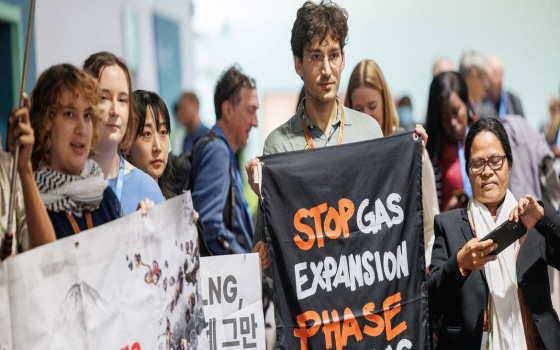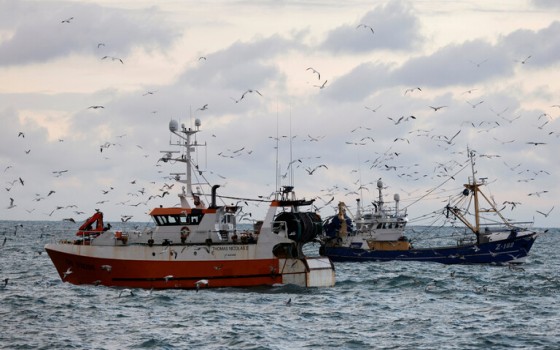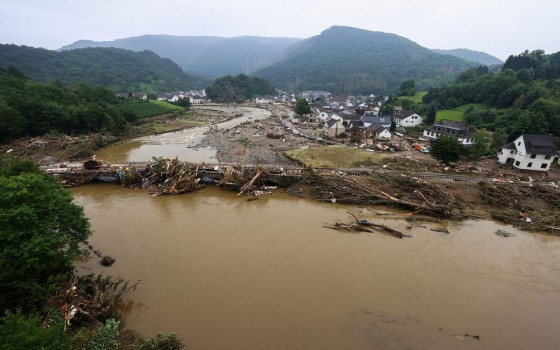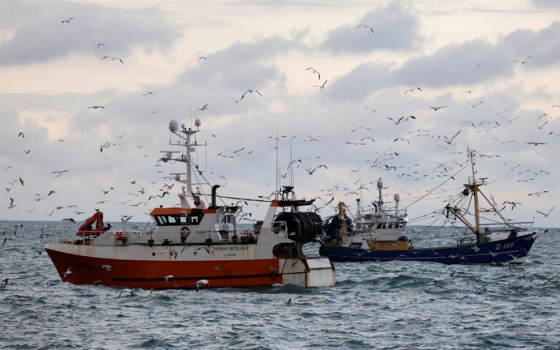
Climate Conference: Governments and industry must stop “sounding rhetoric” and act to reduce emissions

- Europe and Arabs
- Saturday , 16 November 2024 9:36 AM GMT
Baku: Europe and Arabs
"Methane emissions must fall and fall quickly to allow for global warming to be brought under control," warned the Executive Secretary of the United Nations Environment Programme at the Climate Conference (COP29) in Baku.
This comes after a new report issued by the programme revealed that a sophisticated system that detects major methane leaks has sent - over the past two years - 1,200 notifications to governments and companies, but only one percent of these notifications have been responded to. According to the UN Daily News Bulletin, a copy of which we received this morning, Saturday
The Executive Director of the United Nations Environment Programme, Inger Andersen, said about the release of the report: "We now have a reliable system to identify major leaks so that they can be stopped quickly - often with simple repairs."
This came at a key event held yesterday at the 29th United Nations Climate Conference, known as COP-29, which has been held in the Azerbaijani capital, Baku, since Monday. Experts and government negotiators are holding tough talks during the conference on climate finance and emissions reductions, with the aim of reaching an agreement by the end of next week when the climate conference concludes.
What is methane?
According to the United Nations Environment Programme, human-caused methane emissions are responsible for about a third of the planet’s current warming. Reducing these emissions is the fastest and most cost-effective way to slow global warming in the near term and is essential to avoiding serious climate damage.
Three industries produce the majority of human-caused methane: agriculture, waste and fossil fuels. Coal mining accounts for 12 percent of emissions in the fossil fuel industry, while oil and gas extraction, processing and distribution account for 23 percent.
About 20 percent of emissions in the waste sector come from wastewater and landfills. Finally, about 32 percent of emissions in the agricultural sector come from livestock grazing and manure, and 8 percent come from rice farming.
There is currently about 2.5 times more methane in the atmosphere than there was in pre-industrial times, and emissions have been rising in recent years, according to the World Meteorological Organization.
How can we reduce methane?
While methane is considered an “aggressive greenhouse gas,” it is actually easier to reduce than carbon dioxide — a gas known to trap heat — because methane has a shorter lifespan in the atmosphere.
The UN Environment Programme-led International Methane Emissions Observatory and the high-tech Mars system use artificial intelligence and satellite data to detect emissions and help industry and countries identify and address large emissions.
“Governments and oil and gas companies need to stop pretending to address this challenge when the answers are staring them in the face,” said Ms Anderson. “Instead, they need to recognize the huge opportunity and start responding to the alarms by plugging the leaks that are releasing warming methane into the atmosphere. The tools are in place, the targets are set — and now is the time to act.” While there is still much to be done, the report highlights examples of countries and companies that have already acted and responded—proving the value of data-driven solutions like the Mars greenhouse gas leak monitoring system. In 2024, the International Methane Emissions Monitor verified emissions reductions from major leaks in Azerbaijan and the United States. In Algeria and Nigeria, Mars notifications and sharing led to direct action by governments and oil and gas companies to address major methane leaks. For example, UNEP says that in the case of Nigeria, a six-month leak emitted the equivalent of methane to 400,000 cars driven for a year and could have been fixed in less than two weeks simply by replacing faulty equipment.












No Comments Found